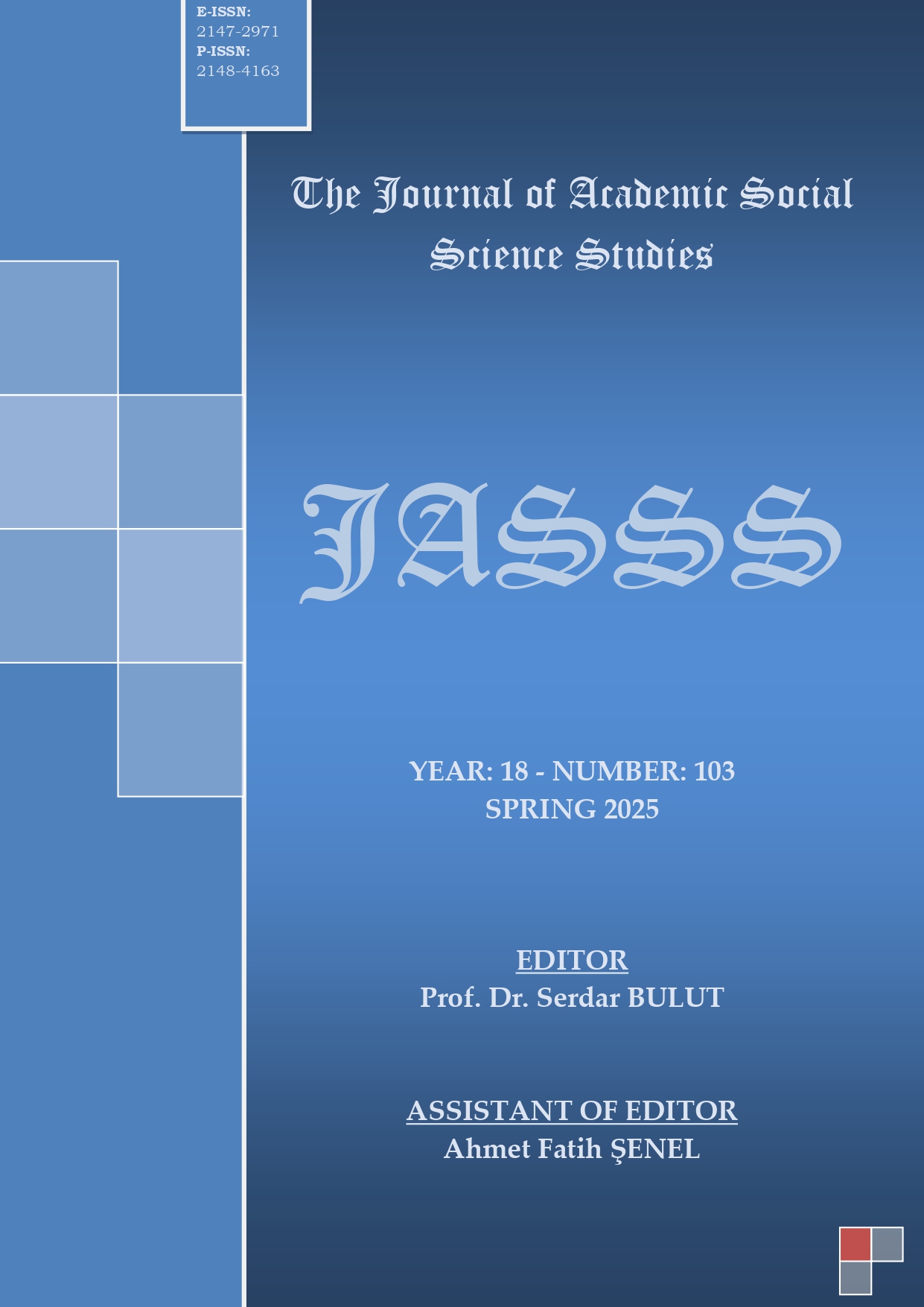Author :
Abstract
Bu çalışma, medyanın eğitim ve özellikle de din eğitimi üzerindeki etkisini belirlemek için görsel-işitsel ve yazılı kaynakların yanı sıra sosyal etkileşimleri de kullanmıştır. Çalışma, din ve eğitimin temel kavramlarına dayanarak medyanın din eğitimindeki rolü üzerine kavramsal ve teorik bir çerçeve oluşturmuştur. Daha sonra, medyanın sosyolojik bir değerlendirmesi yapılmış ve teknoloji, eğitim ve din eğitimi ile ilgili konular incelenmiştir. Aynı zamanda din eğitimi ve medya ilişkisi, din eğitiminde teknolojinin etkisi ve kullanımı, görsel-işitsel ve yazılı kaynaklar ile sosyal etkileşim ışığında medyanın olumlu ve olumsuz etkileri incelenmiştir. Bu araştırma sırasında din eğitimi ve medya arasındaki bağ, din ve teknolojik gelişmeler arasındaki uyum, dinin güncellenme imkânı ve geleneksel din eğitiminin sürdürülebilirliği üzerine tartışmalar yürütülmüştür. Bu çalışmanın sonuçlarına göre, medya kullanımının din eğitimi üzerinde hem olumlu hem de olumsuz etkileri olmakla birlikte, olumlu etkiler olumsuz etkilerden daha ağır basmaktadır.
Bu sonucu destekleyen temel argüman, teknolojik gelişmeleri yakından takip eden toplumun eğitim ve teknolojiyi birbirini tamamlayan unsurlar olarak görmesidir. Bu algıya sahip bir toplumda teknoloji, sanal ortamlar aracılığıyla bilgiye ve sosyal işlevlere hızlı erişim imkanı sunarak hayatı kolaylaştırmada önemli bir rol oynamaktadır. Toplumdaki her bireyin medya unsurlarına kolaylıkla ulaşabildiği günümüzde, medyanın eğitimde ve din eğitiminde kullanılmasıyla eğitimin daha kaliteli ve sonuçlarının daha sürdürülebilir olduğu tespit edilmiştir. Bu çok olumlu bir durum gibi görünse de, doğru yönetilmediği takdirde medya kullanımına harcanan zaman artsa bile eğitime harcanan zamanın azaldığına ve kazanımların olumsuz etkilendiğine dair kanıtlar da mevcuttur.
Keywords
Abstract
This study utilized audiovisual and written sources as well as social interactions to identify the impact of media on education, particularly religious education. The study established a conceptual and theoretical framework on the role of media in religious education based on the basic concepts of religion and education. It then provides a sociological assessment of the media and examines issues related to technology, education and religious education. At the same time, the relationship between religious education and media, the impact and use of technology in religious education, the positive and negative effects of media in the light of audiovisual and written sources and social interaction were examined. During this research, discussions were held on the link between religious education and media, the harmony between religion and technological developments, the possibility of updating religion and the sustainability of traditional religious education. According to the results of this study, although media use has both positive and negative effects on religious education, the positive effects outweigh the negative effects.
The main argument supporting this conclusion is that a society that closely follows technological developments sees education and technology as complementary elements. In a society with this perception, technology plays an important role in facilitating life by providing quick access to information and social functions through virtual environments. Today, when every individual in society has easy access to media elements, it has been found that the use of media in education and religious education is of higher quality and the results are more sustainable. While this seems to be a very positive situation, there is also evidence that if not managed properly, even if the time spent on media use increases, the time spent on education decreases and the gains are negatively affected.





